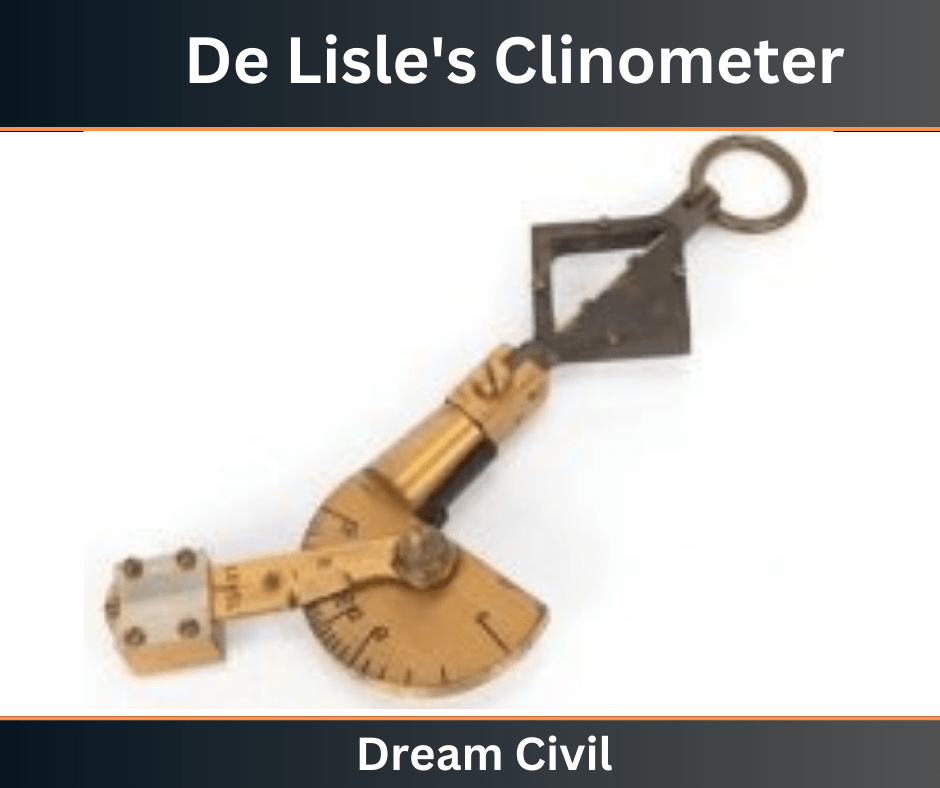Table of Contents
De Lisle’s clinometer is another form of the clinometer, similar to that of the burel hand level used for measuring the vertical angles, determining the slope of the ground, and for setting out gradients.
1. De Lisle’s Clinometer Consists
This consists of the following:
(1) A simple frame, similar to that of a burel level, carrying a mirror extending halfway across the frame, the objects being sighted through the other open half. The frame can be suspended in gimbals.
The edge of the mirror forms a vertical reference line.
(2) A heavy semi-circular arc is attached to the lower end of the frame. The arc is graduated in gradients or slopes from 1 in 5 to 1 in 50.
The arc is attached to the vertical axis to be revived to bring the arc towards the observer (i.e. forward) to measure the rising gradients or away from the observer to measure the failing gradients.
(3) A radial arm is fitted to the center of the arc. The arm consists of a beveled edge that acts as an index. By moving the arm along the arc, the mirror can be inclined to the vertical.
The inclination to the horizontal line from the eye to the point at which it appears in the mirror equals the inclination of the mirror to the vertical. The arm also carries a sliding weight.
When the weight is moved to the outer stop (at the end of the arm), it counters the balances the weight of the arc in a horizontal position and makes the mirror vertical.
To make the line of the sight horizontal, the weight is slid to the outer slope, and the radial arm is turned back to its fullest extent.

2. Uses of De Lisle’s Clinometer
a. To Measure a Gradient
1. Slide the weight to the inner stop of the arm. The arc should be turned forward for rising gradients.
2. Suspend the instrument from the tumb and hold it at arm’s length in such a position that the observer sees the reflected image of his eye at the edge of the mirror.
3. Move the radial arm till the object is sighted through the open half of the frame is coincident with the reflection of the eye. Note the reading on the arc against the beveled edge of the arm. The reading obtained will be in the form of a gradient which can be converted into degrees if so required.
For better results, a vane or target equal to the height of the observer’s eye must be placed at the object and slighted.
A similar procedure sets a point on a given gradient, say 1 in n.
The arm is set on reading 1 in n. The arc should be turned forward for rising gradients and backward for the falling slope.
A peg is driven at the other end of the line and a vane, equal to the height of the observer’s eye, is kept there.
The instrument man then sights the vane and signals the assistant, holding the vane at the other end, to raise the lower the vane till it is seen coincident with the reflection of the eye in the mirror. The peg is then driven in or out till is at the level of the bottom of the vane.
3. References1. Content Filter & Authenticity Checking Team, Dream Civil International (Our team checks every content & detail to maintain quality.) |
Read More: Difference Between Plane and Geodetic Surveying

